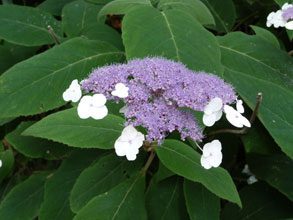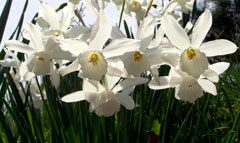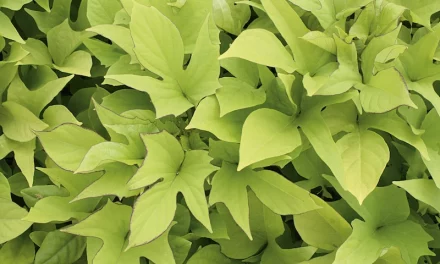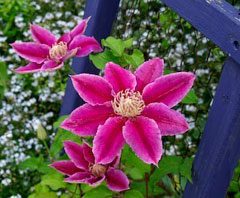 Kenny Rogers isn’t the only one who knows about gambling. We gardeners know a thing or two as well. We do it all the time.
Kenny Rogers isn’t the only one who knows about gambling. We gardeners know a thing or two as well. We do it all the time.
If we rely on plant labels to tell what will grow here, we’re gambling. If the label says good for Zone 8, don’t ante up yet.
Most people are surprised to learn that Beaufort County and Seattle, Washington share the same 8b horticultural zone. That’s because the zones are rated by cold days, and even though Seattle is pretty far north, warm maritime waters keep it from getting really cold. But their summers are cool and mild, so they can successfully grow plants like lilacs and peonies. We can’t. Your best bet on zone 8 labeled plants is to check around before you buy. The Southern Living Garden Book is a good resource.
And here’s where gambling comes in. Beaufort is right in the middle, so to speak. Other zones are pretty clear cut. Zones 9 and higher are sub-tropical and tropical. Zones 7 and lower are not. Our Zone 8 can lean towards either. And we’re more often in Zone 9!

We don’t always have to play the cards we’re dealt. We can fudge. Almost any plant will thrive in a climate that mimics its homeland. The challenge to acquisitive gardeners is to grow plants in a climate which doesn’t. Sometimes because it’s too hot, sometimes because it’s too cold. In most cases, mulch is a gardener’s best friend. A wire cage filled with straw or leaves will protect your smaller tender plants from sharp winter spells. Cold isn’t the only plant killer. Heat and humidity do their fair share, too. Mulch will moderate the soil temperature so that the roots don’t cook in sweltering summers or die from freezing in winter. Even some summer blooming plants which gasp and die in our hot summers (think delphiniums and sweet peas) can be grown as cool season annuals; you just have to get plants which will bloom before or after the summer heat. Do your homework to find which ones.
Often, you can find a protected corner on your property, which will give you an extra zone. Watch your property and when it snows (it does, you know) or the ground is covered with frost, make a note of the areas which are the last to melt. These might be just right for plants recommended for a zone colder than we normally get. But it’s always a gamble with plants from other zones.
So before you invest in a plant that isn’t recommended for our climate, be sure you’re prepared to make that investment. Because it isn’t just in money. Matrimony isn’t the only lifetime commitment. You must be ready to make a lifetime commitment to this plant to give it the extra care it will need to survive here. It may mean only finding a climate-friendly site on your property, but it could also mean having to, in the case of many bulbs, dig them up every late fall and store them in a refrigerator to give them their necessary dormancy, or keep the plant in a container and bring it in from the cold every year. It can get tedious.
On-line gardening forums can often help you make a decision about a particular plant. The website “Dave’s Garden” has an extensive library of plants with comments from gardeners all over the country. Our County Horticulture Extension Agent, Laura Lee Rose, is a valuable resource. Visit the Master Gardener Information Tables at the Farmers’ Markets in the area. If the Master Gardeners there don’t have the answer, they’ll help you find it.
If you want to hedge your bets on plants not recommended for growing here, go on every garden tour you can. The Garden a Day tours in June are great, and they’re free! (See our last issue: http://www.lcweekly.com/local-color/5516-beaufort-garden-club-celebrates-25th-annual-garden-a-day)
Many of these gardens have one or two ‘iffy’ plants that defy their recommended zones. Ever since I moved here, I’ve wanted a Japanese ‘Full Moon’ maple, but all of the printed information says that it grows only to Zone 7. Imagine my delight when I saw it thriving in a garden on the GAD tours. When I asked the homeowner about it, she said she gave it no special care. It’s back on my wish list.
I lost the gamble when I dug up and brought a young Smoke Tree (Cotinus coggygria) from my garden in the Midwest to my new home in the Lowcountry. It’s listed as a Zone 8 tree, but our heat and humidity did it in. So I replaced it. Twice. When that last one bit the dust, I gave up. You gotta’ know when to fold ‘em, too.








